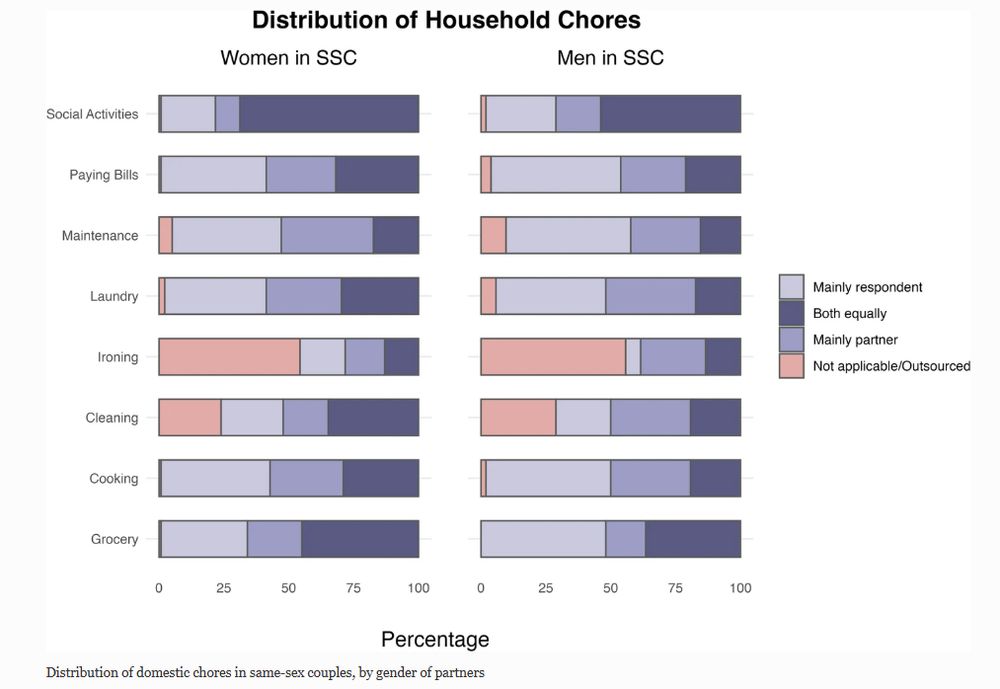
University of Trento
"Beyond conservative gender roles: exploring the division of paid and unpaid labour among Italian same-sex couples" - by Gioia Geremia & @agnese-vitali.bsky.social
🔗 genus.springeropen.com/articles/10....

"Beyond conservative gender roles: exploring the division of paid and unpaid labour among Italian same-sex couples" - by Gioia Geremia & @agnese-vitali.bsky.social
🔗 genus.springeropen.com/articles/10....
With K. Schwanitz, @vferraretto.bsky.social & @agnese-vitali.bsky.social, we explore how young Europeans plan adulthood using @ggp.bsky.social + @ess-survey.bsky.social data.
doi.org/10.12765/CPo...

With K. Schwanitz, @vferraretto.bsky.social & @agnese-vitali.bsky.social, we explore how young Europeans plan adulthood using @ggp.bsky.social + @ess-survey.bsky.social data.
doi.org/10.12765/CPo...
and hosted by @mpidr.bsky.social, was published on the European Journal of Population:
doi.org/10.1007/s106...
We study the econ determinants of the transition from living apart to living together 👫:

and hosted by @mpidr.bsky.social, was published on the European Journal of Population:
doi.org/10.1007/s106...
We study the econ determinants of the transition from living apart to living together 👫:
"The contribution of medically assisted reproduction to total, age-, and parity-specific fertility in Italy"
is now out in Human Reproduction, with D. Vignoli, A. Burgio & C. Castagnaro.
lnkd.in/dT4WibmV
"The contribution of medically assisted reproduction to total, age-, and parity-specific fertility in Italy"
is now out in Human Reproduction, with D. Vignoli, A. Burgio & C. Castagnaro.
lnkd.in/dT4WibmV
🔗 Watch now: tinyurl.com/vitaliwiccoll
#WiCColloquium #Demography

🔗 Watch now: tinyurl.com/vitaliwiccoll
#WiCColloquium #Demography
@agnese-vitali.bsky.social from University of Trento will present insights into "The Contribution of Medically Assisted Reproduction to Fertility in Italy".
📆1 July 2025, 11:00-12:00h
📍PSK Building MR01 (3rd floor)
🔗 www.oeaw.ac.at/vid/events/w...


@agnese-vitali.bsky.social from University of Trento will present insights into "The Contribution of Medically Assisted Reproduction to Fertility in Italy".
📆1 July 2025, 11:00-12:00h
📍PSK Building MR01 (3rd floor)
🔗 www.oeaw.ac.at/vid/events/w...
Let the @washingtonpost.com explain some of the reasons why fewer people are having children: unf.pa/bbp
✍ @eduardoelreportero.bsky.social
#TheRealFertilityCrisis

Let the @washingtonpost.com explain some of the reasons why fewer people are having children: unf.pa/bbp
✍ @eduardoelreportero.bsky.social
#TheRealFertilityCrisis
In questo pezzo per Secondo Welfare Paolo Riva analizza il nuovo Piano Nazionale per la Famiglia, anche con un mio commento
www.secondowelfare.it/primo-welfar...

In questo pezzo per Secondo Welfare Paolo Riva analizza il nuovo Piano Nazionale per la Famiglia, anche con un mio commento
www.secondowelfare.it/primo-welfar...
The real fertility crisis: The most consequential reproductive decision a person can make –when, whether and with whom to have a child– is being undermined by a set of barriers and obstacles
📉 Job insecurity
🏠 Housing
Why would people choose to have children if they can't afford them?
It's time we address #TheRealFertilityCrisis.
Let @unfpa.org—the #UnitedNations sexual and reproductive health agency—explain how: unf.pa/rfc

The real fertility crisis: The most consequential reproductive decision a person can make –when, whether and with whom to have a child– is being undermined by a set of barriers and obstacles
People need help overcoming the barriers to parenthood they face.
Let @unfpa.org—the #UnitedNations sexual and reproductive health agency—explain ➡️ unf.pa/rfc
#TheRealFertilityCrisis

People need help overcoming the barriers to parenthood they face.
Let @unfpa.org—the #UnitedNations sexual and reproductive health agency—explain ➡️ unf.pa/rfc
#TheRealFertilityCrisis
Among the authors a fantastic @agnese-vitali.bsky.social ❤️
📉 Job insecurity
🏠 Housing
Why would people choose to have children if they can't afford them?
It's time we address #TheRealFertilityCrisis.
Let @unfpa.org—the #UnitedNations sexual and reproductive health agency—explain how: unf.pa/rfc

Among the authors a fantastic @agnese-vitali.bsky.social ❤️




It has been a beautiful stay <3
For today's session we had the pleasure of hosting @robertarutigliano.bsky.social (UPV/EHU) and T. Nazio (University of Turin).
Check it out to discover a bit more on the demographics of age at self-disclosure and age at first coming out among LGB people in Europe 📝
(co-authored with my supervisor, @agnese-vitali.bsky.social !)


Check it out to discover a bit more on the demographics of age at self-disclosure and age at first coming out among LGB people in Europe 📝
(co-authored with my supervisor, @agnese-vitali.bsky.social !)


📢The Vienna Institute of Demography is seeking a Postdoc to join Demography of Austria Research Group
📍 Location: Vienna, Austria
📅 Application Deadline: January 15, 2025
➡️https://oeaw.ac.at/fileadmin/subsites/Jobs/VID/VID192PD124_.pdf
@oeaw.bsky.social
📢The Vienna Institute of Demography is seeking a Postdoc to join Demography of Austria Research Group
📍 Location: Vienna, Austria
📅 Application Deadline: January 15, 2025
➡️https://oeaw.ac.at/fileadmin/subsites/Jobs/VID/VID192PD124_.pdf
@oeaw.bsky.social

